Modernizing Insurance Data to Drive Intelligent Decisions

Data is the currency of our digital, technology-dependent world. Every industry has tried to utilize data to its advantage, but most industries have the bigger problem of compiling and/or generating data from their operations and business. But the insurance sector does not face that problem, rather, they experience a surge of data.
The insurance industry faces the challenge of utilizing its data for better decisions and strategic initiatives. Technology remains the only option to use the data easily, securely, and quickly. Intelligent decisions can be driven through advanced data technologies and help drive business goals through insights and automation.
The data in the insurance sector is largely unstructured, hosted on legacy technologies, and is not easily accessible for analytics. Modernizing the data and technology is the key to unlocking the data potential of an organization. But before that, here are a few ways data can transform an insurance business if approached strategically.
Different ways data is transforming insurance
- Produce more, use more
With digital technology as the foundation, insurers can easily utilize their technology stack and integrations with their customers to extract more data. This data can be used further to derive insights, formulate strategies, personalize pricing, claims, etc. And it doesn’t have to be limited to customer-generated data, it can be extended to internal operations and management also.
- External data
Insurers can integrate, source, or in general, use other sources of data like sensor data in cars, IoT data from homes, wearables, medical equipment, etc. This enables broader range of tools to process claims and policies for various products. The data saves time, effort, and the costs involved in investigations and checks.
- Technology backed solutions
Advanced data technologies can provide various autonomous functions to automate decisions and actions. AI, for instance, can perform multiple analyses to offer personalization and also aid in the customer journey. Similarly, other technologies can be used as a foundation or extension of the IT infrastructure to aid in making intelligent decisions.
- Cloud computing on the rise
Insurers’ biggest challenge is reducing dependencies on on-premise, legacy technologies. This is especially important for data as all data technologies require quick, reliable, and democratized access. Cloud computing solves this problem by providing secure access to insurance data without compromising security and compliance. Cloud infrastructure can also be scaled easily and quickly to provide data storage and processing flexibility.
Some advantages can be realized quickly, while others may require time and skills to implement right. With the changing landscape of markets and demand, modern data technologies can future-proof the business to an extent and serve as the foundation for future use cases. To achieve all this, data modernization and transformation initiatives should focus on enabling attributes by:
Key features of modern data solutions for insurers
- Planning for scale and elasticity — using cloud technologies, scaling up and down can be easily achieved on a need-to-need basis. However, the data architecture must also allow scaling computational power for analytics and overcome business-to-IT dependencies for using data.
- Ingesting all types of data — the data technology should permit and accommodate any type of data with minimal technical inputs from external sources like IoT devices, wearables, instruments and equipment, etc.
- Being metadata-driven from the start — prioritizing metadata during development and implementation enables much better cataloging, archiving, and overall data management. It also provides deeper insights and richer analytics for insurers. Also, shifting focus to metadata in later stages can be very challenging.
- Opening access across all layers — Data is often stored in multiple layers with raw data, curated data, and consumable data in each. The consumption layer is the typical go-to layer for all data requirements, but the access itself should not be limited to it.
- Automating data integration — As data sources continue evolving and new sources are integrated, insurers must use advanced data technologies like AI/ML to automate data integration and mapping.
- Unifying security model for data — Insurers often have data spread across the IT ecosystem. This calls for a holistic and system-wide security approach to gain visibility and provide seamless integration between all points of data generation, processing, storage, and consumption.
Modernizing data for the insurance industry is a complex undertaking. This is partly due to their dependence on legacy technologies and the large amount of historical data collected. Driving intelligent decisions backed by data analytics requires intelligent architecture and systems. Without the above-mentioned attributes, data solutions might provide an advantage in the short run but will eventually need a redesign to remain competitive. However, laying the groundwork with intelligent and strategic data modernization will enable an incremental progression of growth and innovation.






